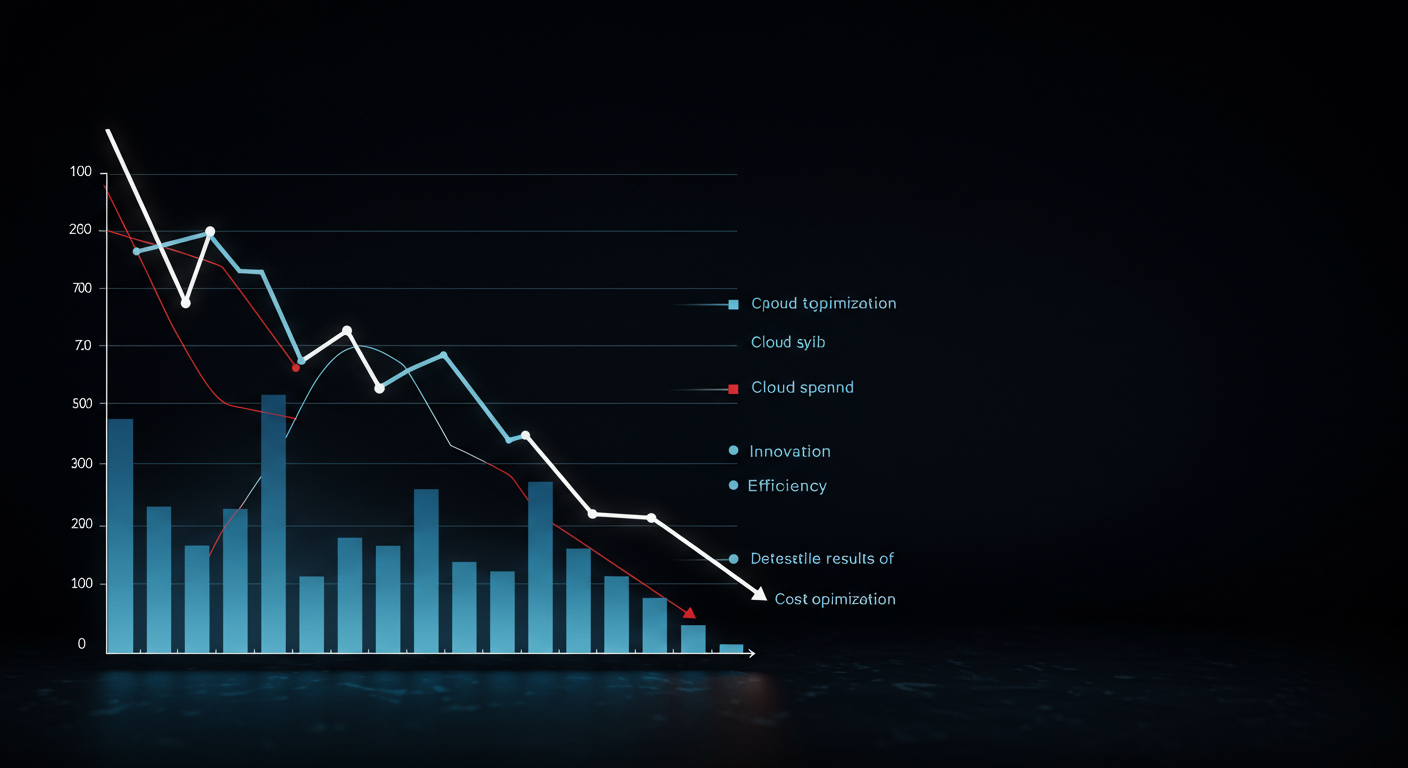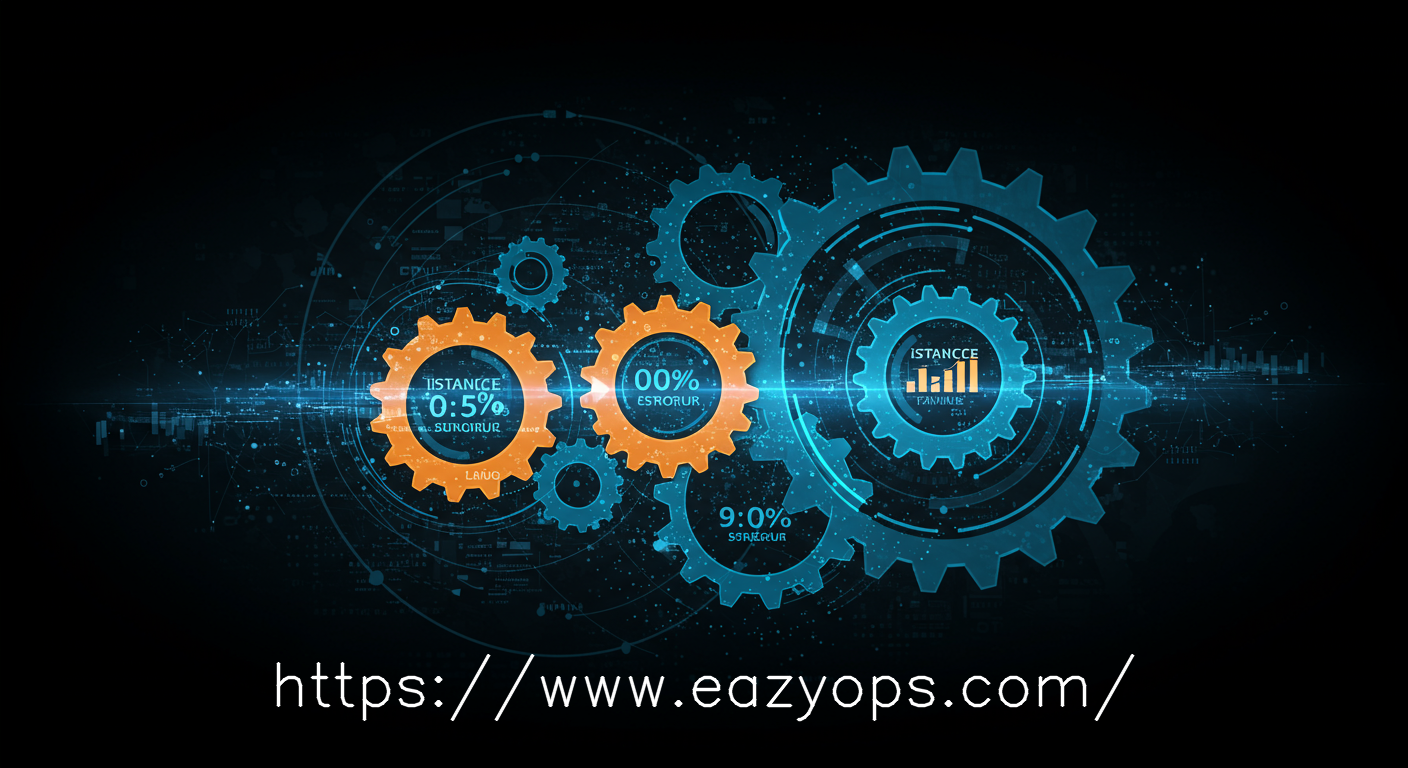AWS Instance Family Misalignment Drives Hidden Costs
"We're paying how much for what... exactly?"
"Another month, another AWS bill that feels... off," I thought, staring at the cost explorer. It wasn't a sudden spike like a runaway AI training job, but a persistent, dull ache – a line item for EC2 instances that just felt too high for what we were running. Our internal tools, staging environments, and even some non-critical batch processing jobs were contributing a disproportionate amount to the total. Digging deeper, it was M5 instances, many of them m5.large or m5.xlarge, humming along at less than 10% CPU utilization for most of the day. They weren't broken; they were just incredibly bored.
This scenario wasn't just a hypothetical. One particular set of internal services, meant to support our customer success team, was costing us nearly $3,800 a month. For services that saw peak usage for maybe an hour or two a day, and were mostly idle otherwise, this seemed ludicrous. Yet, when I asked the team, the answer was always the same: "M5 is general purpose, right? It's what we always use." It was the path of least resistance, a default choice, leading to a significant bleed in our cloud budget.
The Illusion of "General Purpose"
We tried the usual suspects to tackle this. First, manual reviews. We'd pore over CloudWatch metrics, tagging instances, trying to map workloads to actual performance needs. It was agonizingly slow and never truly comprehensive. By the time we identified a batch of misaligned instances, new ones had been spun up, perpetuating the cycle. The sheer volume of instances and the dynamic nature of our deployments made human-driven optimization a game of whack-a-mole.
Then came the generic rightsizing recommendations from cloud providers or third-party tools. They were helpful for basic scaling, suggesting an m5.xlarge could be an m5.large if its average CPU was low. But they rarely, if ever, suggested a change in instance family. They optimized within the given family, missing the fundamental architectural mismatch. Reducing an m5.large to an m5.medium might save a few bucks, but it was like bringing a bazooka to a knife fight instead of just bringing a knife. The core problem of paying for dedicated, baseline performance that wasn't needed remained. We needed a different kind of insight, a deeper understanding of our workload's true nature.


Decoding Workload DNA: Burstable Patterns Uncovered
The turning point came during a deeper dive into CloudWatch metrics, not just focusing on average CPU but also on CPU credits for burstable instances (like T3/T4g) and the patterns of utilization on our M5s. That's when it hit me: these "consistently low" M5 instances weren't just under-utilized; their utilization patterns screamed "burstable." They'd idle at 5% CPU for hours, then suddenly jump to 50-70% for a short burst (a user request, an API call, a scheduled job) before returning to sleep.
This was the classic use case for AWS T3 instances (or the newer T4g, which offer even better price-performance with Graviton processors). M5 instances are designed for workloads that require consistently high CPU performance and don't accrue credits. T3 instances, on the other hand, are designed for workloads with a low to moderate baseline CPU usage but need the ability to burst to full core performance for short periods. They accumulate CPU credits when idle and spend them when bursting. Our workloads were not "general purpose" in the M5 sense; they were "burstable general purpose." The default choice of M5, while seemingly safe, was a significant financial misstep. It was like buying an enterprise-grade dedicated internet line for a home user who only browses the web for an hour a day.
EazyOps: The Intelligent Matchmaker for Instances
Recognizing the pattern was one thing; fixing it systematically was another. Manual identification and migration for hundreds of instances across multiple accounts was impractical. This is where EazyOps came into play. We integrated EazyOps into our AWS environment, initially skeptical but hopeful. EazyOps didn't just look at average CPU; it performed a granular analysis of utilization patterns over extended periods – weeks, even months. It looked for the tell-tale signs: long periods of low CPU, occasional bursts, and crucially, the absence of sustained high utilization that would necessitate a dedicated M-family instance.
EazyOps' intelligence went beyond simple m5.large to m5.medium recommendations. It identified the instances that were ideal candidates for a complete instance family shift, specifically from M5 to T3 (or other appropriate burstable families like T4g). It provided clear, data-backed recommendations: "This m5.large instance, currently costing $X/month, exhibits burstable patterns. It can be safely migrated to a t3.large, reducing its cost by 65% without impacting performance, saving you $Y/month." The platform presented these insights in an actionable dashboard, complete with projected savings. This was the "Aha!" moment on steroids – automated, precise, and scalable.
Tangible Savings: From Hidden Costs to Real Value
With EazyOps providing these precise recommendations, we began the migration. For our non-critical internal tools and staging environments, we leveraged EazyOps' auto-migration capabilities. After a thorough review and setting up guardrails, EazyOps could automatically replace an m5.large with a t3.large, handling the instance stop/start and configuration changes with minimal human intervention. For more critical workloads, the recommendations were reviewed, approved, and then executed manually or semi-automatically.
The results were immediate and striking. For the specific services we initially targeted, that $3,800/month bill plummeted by 65%, bringing it down to approximately $1,330/month. This wasn't just a one-off saving; it was a recurring, sustained reduction. Across our entire AWS footprint, EazyOps identified and helped us correct numerous similar misalignments, leading to substantial overall cost reductions.
- Direct Cost Savings: Over $3,800/month on the initially identified workloads.
- Overall EC2 Spend Reduction: A total of 15% reduction in our company-wide EC2 bill within the first three months of using EazyOps for instance family optimization.
- Improved Resource Utilization: The freed-up resources (M5 instances that were now underutilized) could be repurposed or terminated, leading to a healthier overall cloud environment.
- Reduced Operational Overhead: Our engineering and FinOps teams spent significantly less time manually reviewing metrics and more time on strategic initiatives.
This wasn't just about saving money; it was about spending smarter, aligning our infrastructure precisely with our workload demands.


Key Takeaways: Redefining Cloud Cost Strategy
This experience reinforced several critical lessons about cloud cost management, especially in dynamic environments:
- Instance Family Matters More Than You Think: It's not just about CPU/RAM sizing; it's about understanding the fundamental performance characteristics of each instance family and matching them to your workload's needs. A "general purpose" M5 is not truly general purpose for all use cases, especially burstable ones.
- Defaults Are Dangerous: The path of least resistance often leads to the most expensive outcomes. Developers and engineers, under pressure, will often pick what's familiar or the default, rather than the most cost-optimized option.
- Behavioral Analysis is Key: Simple average utilization metrics can be misleading. True optimization comes from analyzing workload patterns – when they burst, when they idle, and for how long. This behavioral insight is crucial for identifying burstable candidates.
- Automation is Essential for Scale: Manually identifying and migrating instances for optimal family alignment is a Sisyphean task. Automated tools that continuously monitor, analyze, and recommend (or even act on) these changes are non-negotiable for large cloud estates.
- Don't Just Rightsize, Right-Family: The concept of rightsizing needs to evolve to include "right-familying." Shifting from a dedicated performance family (M5) to a burstable one (T3) for appropriate workloads can yield far greater savings than simply scaling down within the same family.
The Future of Intelligent Cloud Cost Optimization
The success with M5 to T3 migration opened our eyes to the broader potential of intelligent instance family and type optimization. The journey doesn't end here; it only expands. We're now exploring how EazyOps can help us with:
- Proactive Misalignment Detection: Catching these misconfigurations even earlier, perhaps during CI/CD pipelines or at the point of instance provisioning, to prevent costly defaults from ever taking root.
- Cross-Family Optimization Beyond Burstable: Identifying other scenarios where a different instance family (e.g., C-family for true compute-intensive tasks, R-family for memory-intensive workloads, or specialized instances like G/P for AI/ML) would be more cost-effective based on deep utilization analysis.
- Integration with Spot Instances: Leveraging EazyOps' insights to strategically move even more burstable or fault-tolerant workloads to Spot Instances for exponential savings, while maintaining resilience.
- Continuous Learning and Adaptation: As our workloads evolve and AWS introduces new instance types, EazyOps' AI-driven analysis will continuously adapt, ensuring we always run on the most optimal and cost-efficient infrastructure.
At EazyOps, we believe that understanding your cloud spend isn't just about tracking numbers; it's about understanding the behavior of your workloads and intelligently matching them to the vast array of options cloud providers offer. Misalignments like the M5 to T3 scenario are just one example of the hidden costs that can accumulate. By automating the discovery and remediation of these issues, we empower businesses to optimize their cloud spend significantly, freeing up budget for innovation and growth.
This is the future of cloud cost management: intelligent, automated, and deeply aligned with your actual operational needs. It's about making sure every dollar spent in the cloud delivers maximum value.
About Shujat
Shujat is a Senior Backend Engineer at EazyOps, working at the intersection of performance engineering, cloud cost optimization, and AI infrastructure. He writes to share practical strategies for building efficient, intelligent systems.